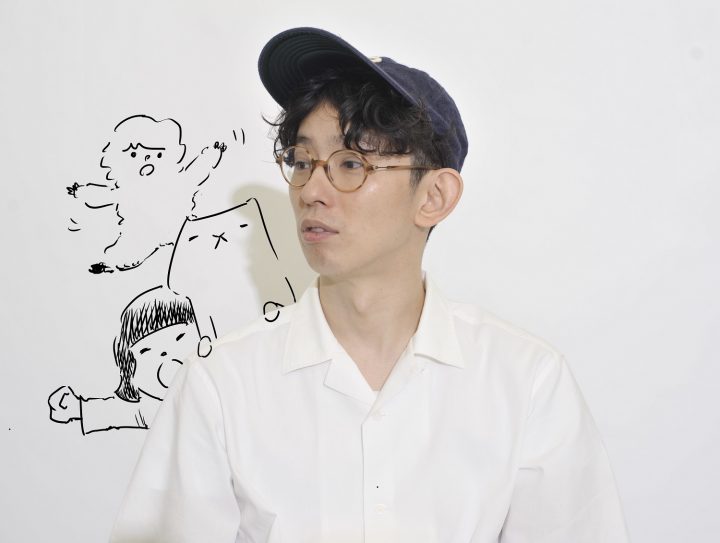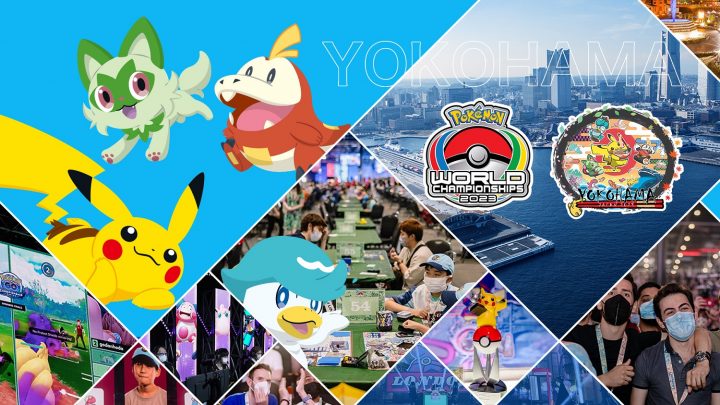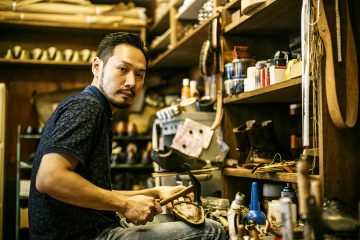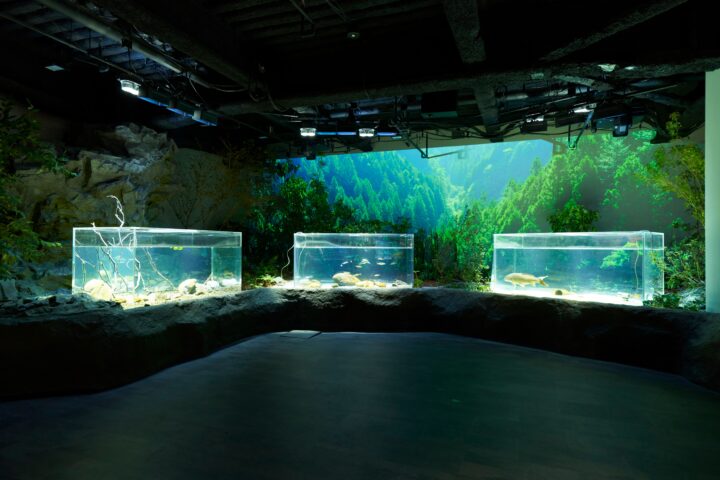Bringing Japanese talent to the world! Nissan Art Award 2020 Grand Prix winner announced!
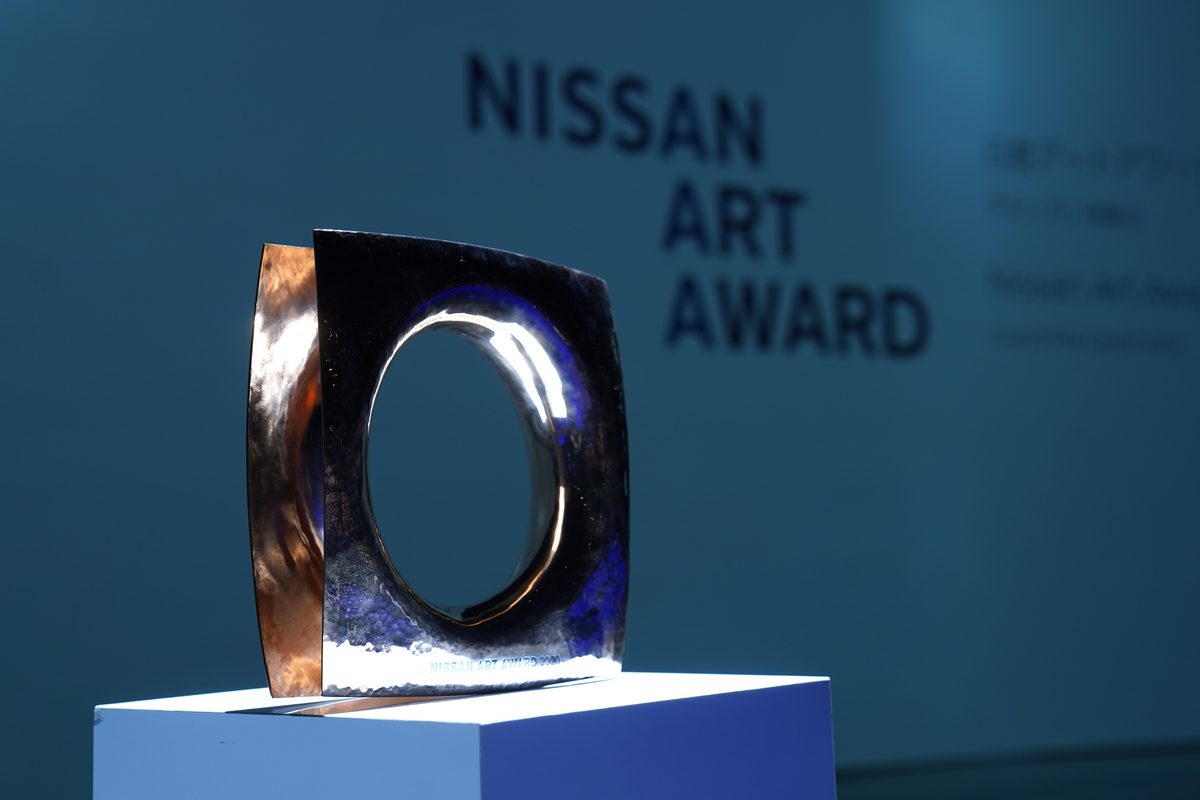
(TOP image) The Nissan Art Award 2020 trophy. It was designed by product designer Keita Suzuki and produced in collaboration with Kaikado, a Kyoto workshop that has been in business since 1875.
The Nissan Art Award was established with the aim of supporting outstanding Japanese artists in the field of contemporary art and helping to further the development of Japanese culture for future generations. This year, the award's fourth year, was held in conjunction with the Yokohama Triennale.
The first round of judging took place in May 2019, with five artists selected as finalists from 28 candidates recommended by curators, researchers, and others. The Grand Prize winner will be announced on Wednesday, August 26th!

The Grand Prize winner was Pan Ishu, who was born in Shanghai in 1987, moved to Japan as a child, and currently lives and works in Tokyo. He is an artist who has created works based on the theme of "movement" based on his own experiences.
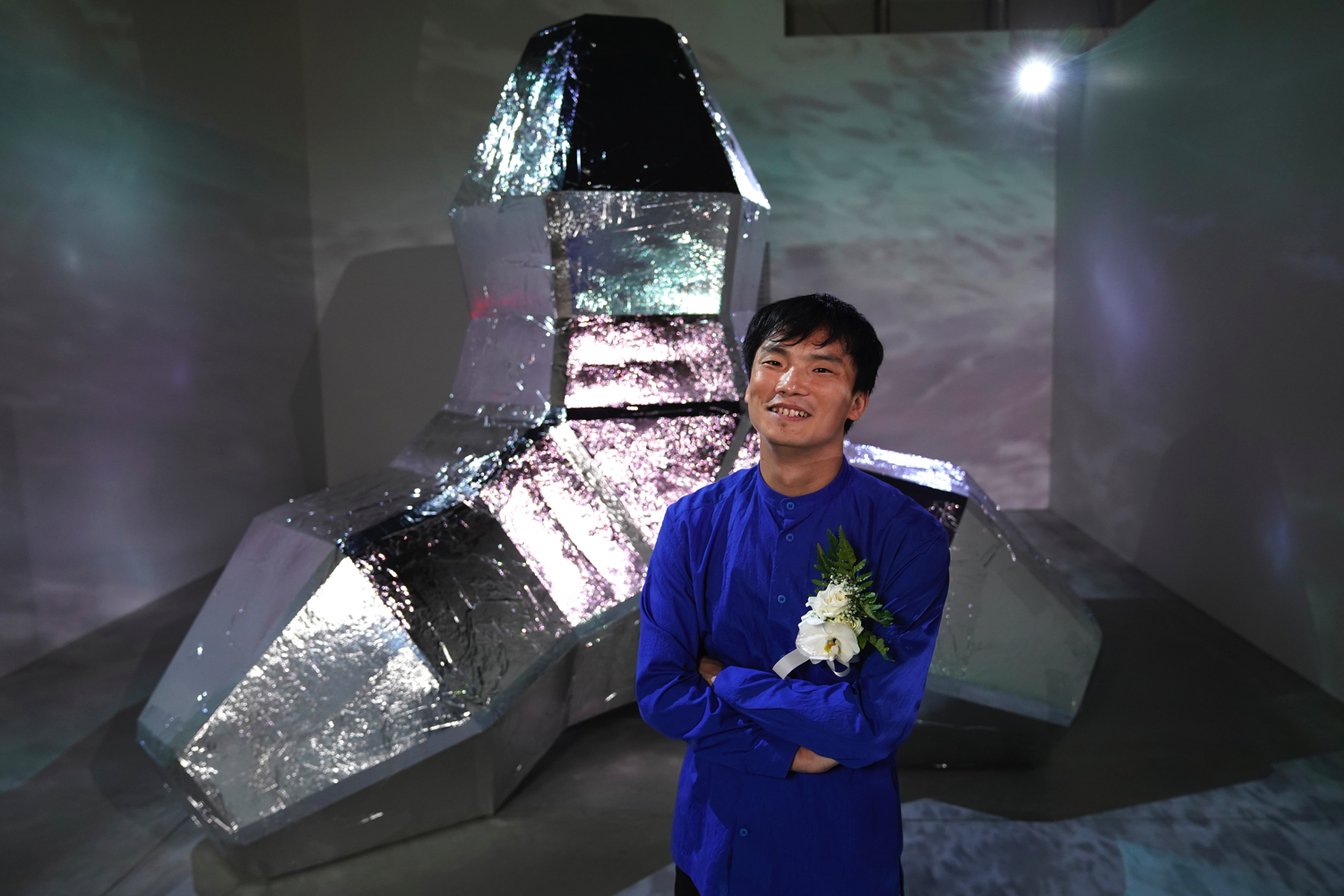
The motif of the work is wave-breaking blocks, commonly known as tetrapods. This was wrapped in emergency sheets (a familiar disaster prevention item) developed by NAS, and combined with a video work, the artist presented a new installation. The wave-breaking blocks, which normally stay put on the shore, have separated from their "flock" and are now floating in the sea, resembling a spaceship. In a situation where people's movements are restricted due to the COVID-19 pandemic, the work conveys a feeling that goes beyond what the artist intended.
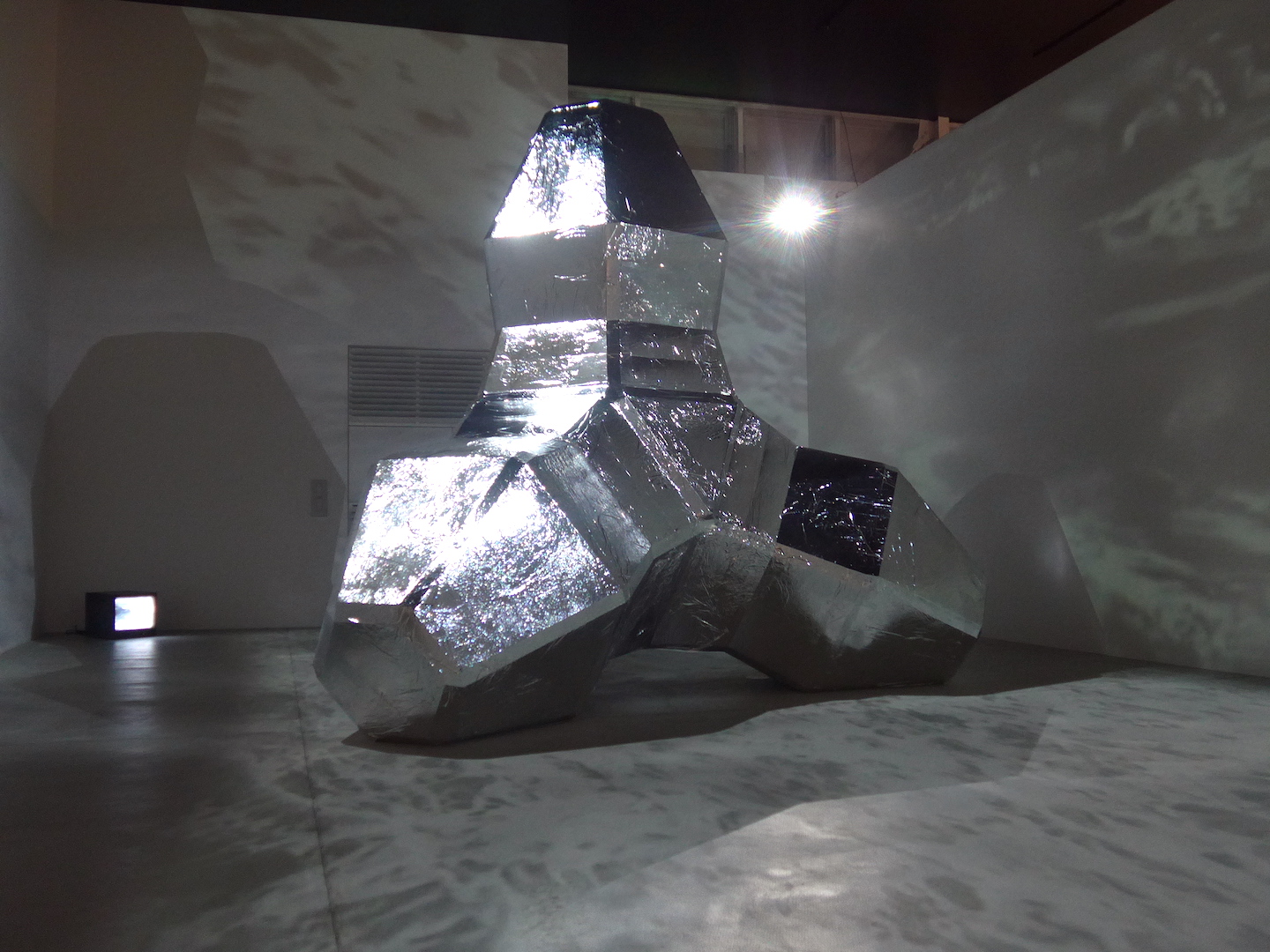
*Pan Yizhou《where are you now》2020
All of the works by the finalists, including Pan, are on display at the Nissan Pavilion in Yokohama (until September 22, 2020) in the "Nissan Award 2020 Finalist New Works Exhibition." We hope you will take this opportunity to experience cutting-edge contemporary art, so we'd like to give you a sneak peek at the atmosphere of the venue.
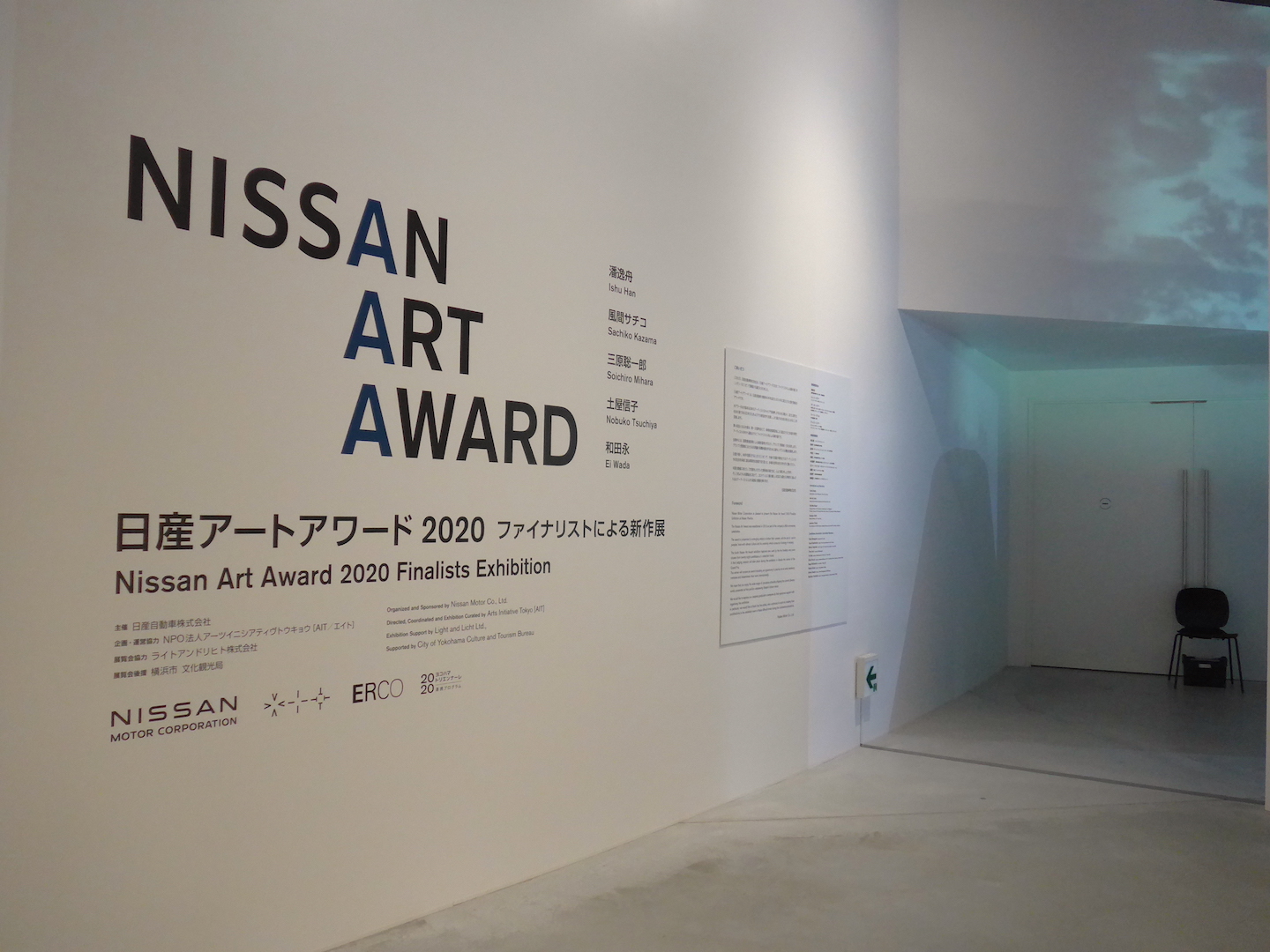
The first thing that catches your eye upon entering the exhibition hall is Kazama Sachiko's Dyslympics 2020. The work, unveiled in 2018, depicts the opening ceremony of the Olympic Games to be held in the fictional city of Dyslympia in the year 2680 of the Imperial calendar (2020 AD). Packed with ominous elements, such as a virus-like sun, it brings to mind the words spoken at the press conference for the Yokohama Triennale 2020: "Artists sometimes foresee the future."

* Kazama Sachiko "Discolympics 2020" 2018
On the opposite wall, four new works created specifically for this exhibition are on display.

* Kazama Sachiko "PAVILION - Earth's Fart House" "PAVILION - White Elephant House" "¥=∞" "COUNT ZERO" 2020
Soichiro Mihara is an artist who creates works that combine natural phenomena with media technology, and this time the motif is "water." The three states of water - ice, water, and water vapor - are displayed on a plate that stretches straight out like a runway. It seems to be some kind of scientific device, but the sight of the three states of water lined up at the same time gives off a fantastical nuance.

* Soichiro Mihara “Mushumono” 2020
This is the corner of Ei Wada, who is running a participatory art project called "Electronicos Fantasticos!", which turns old household appliances into musical instruments.
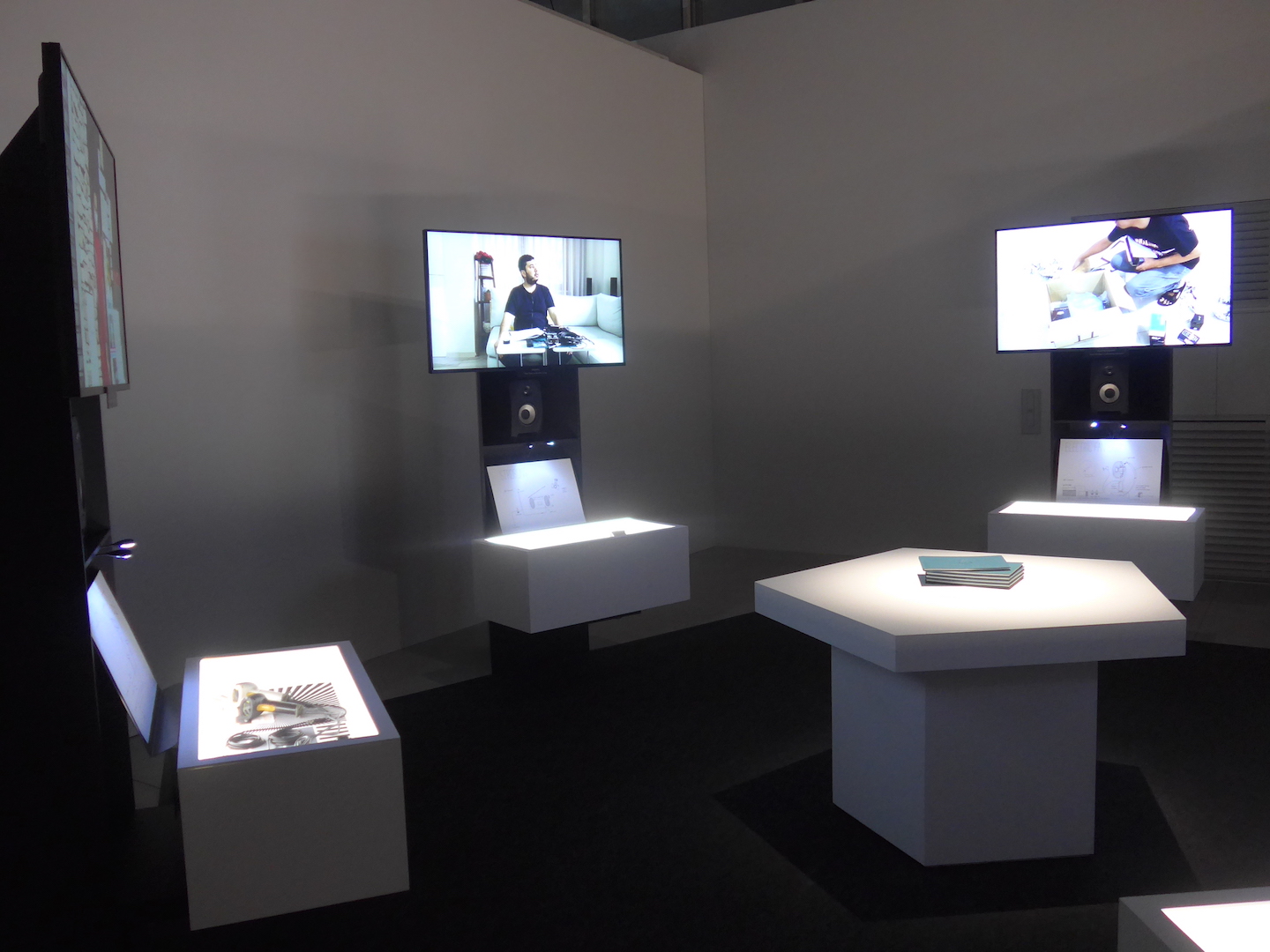
* Ei Wada "Stateless Electromagnetic Orchestra: BC" 2019
The "Electromagnetic Musical Instrument Manual" was sent to five people who live in different places and do not know each other, and a video was exhibited showing them assembling CRT televisions, electric fans, boomboxes, etc. into musical instruments and trying to play them. "Is this a musical instrument?" they asked, scratching their heads, but everyone seemed to be having fun.

Due to the current coronavirus pandemic, it seems that some participants' packages did not arrive as scheduled, but perhaps this is also a typical development in contemporary art that reflects the times.
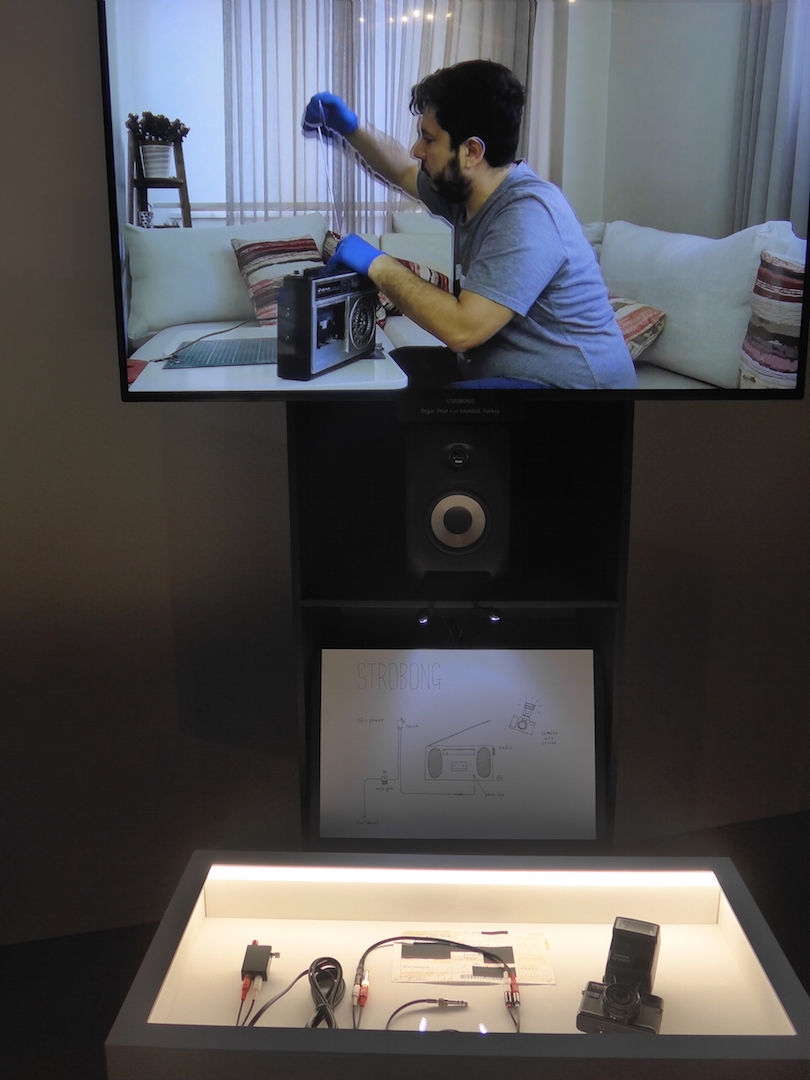
Finally, there is a corner where Nobuko Tsuchiya creates "sculptures" by combining everyday items such as wool, silicon, iron fragments, cotton, and plastic, as well as scrap materials that she has collected.

*Nobuko Tsuchiya《Mute-Echoes》2020
It looks squishy and feels nice, but you must not touch the artwork!
I wondered if the whole piece was one piece of art, but since it was impossible to fit the whole piece on camera, I tried taking pictures from various angles. (Photography is allowed inside the museum!) As I searched for interesting angles, I began to feel like an artist myself, which was quite fun.
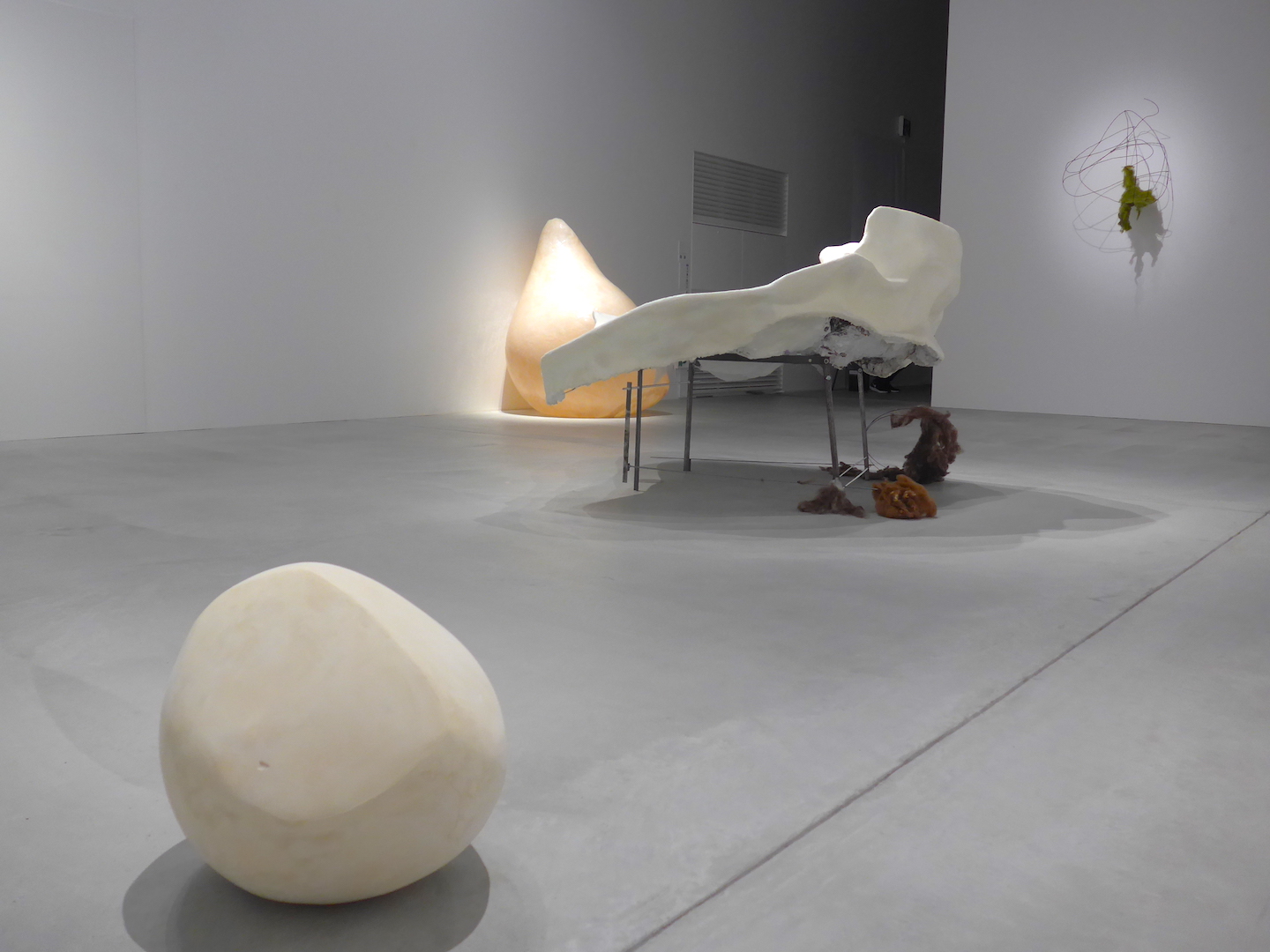
The venue, the Nissan Pavilion, is a facility where you can experience the future of mobility envisioned by Nissan through a variety of content. In addition to cars, there are plenty of entertaining exhibits, including games, and admission is free!
The Nissan Pavilion will be open for a limited time only until Friday, October 23, 2020, so be sure to check it out.
*The Art Award exhibition will be on display until Tuesday, September 22nd (national holiday).
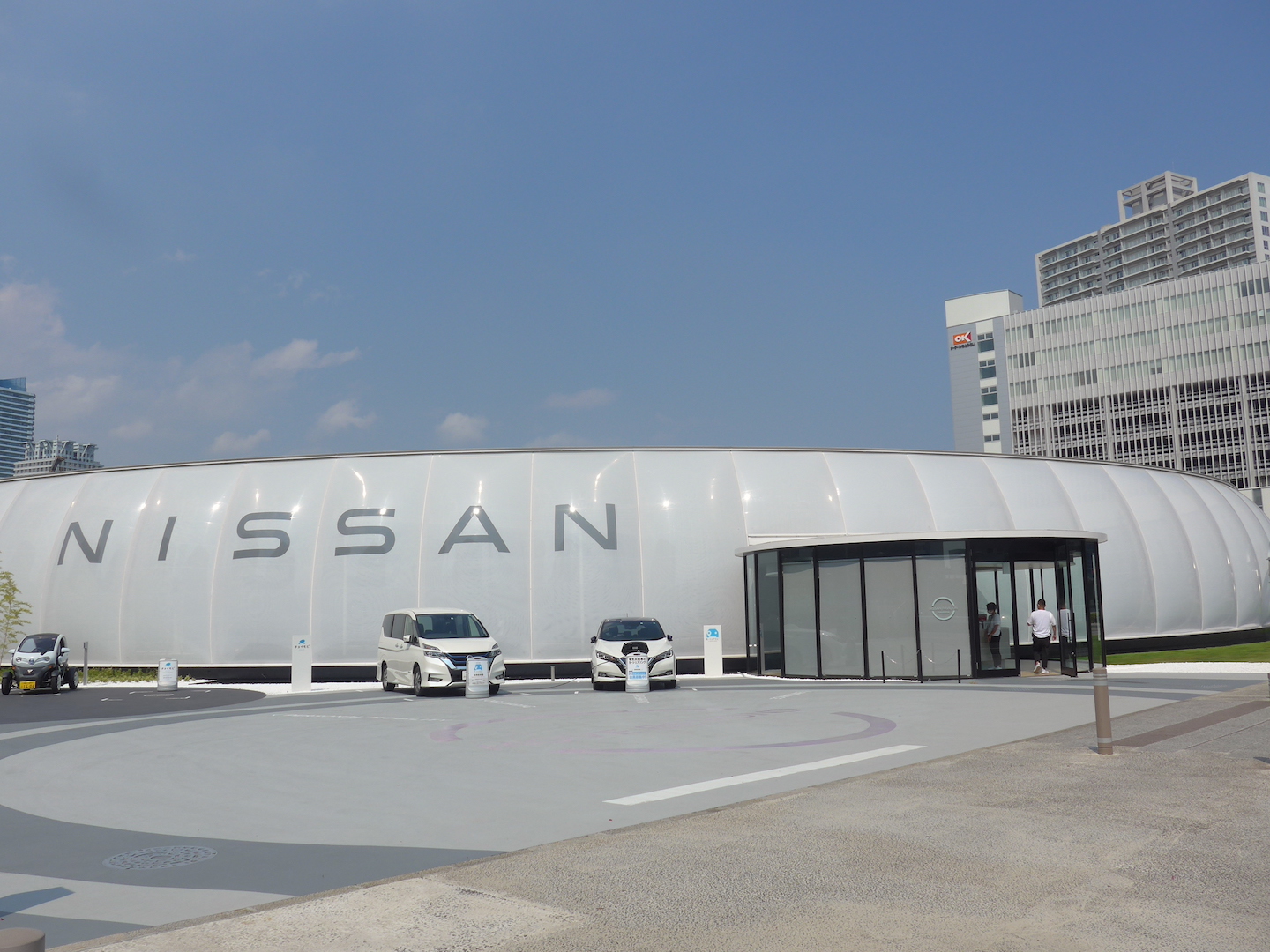
The place that personally caught my attention the most was "CHAYA CAFE," where you can enjoy salads, sandwiches, craft beer, and more made with ingredients from Kanagawa. The menu items served here are apparently made with hydroponically grown vegetables grown using only electricity and water.
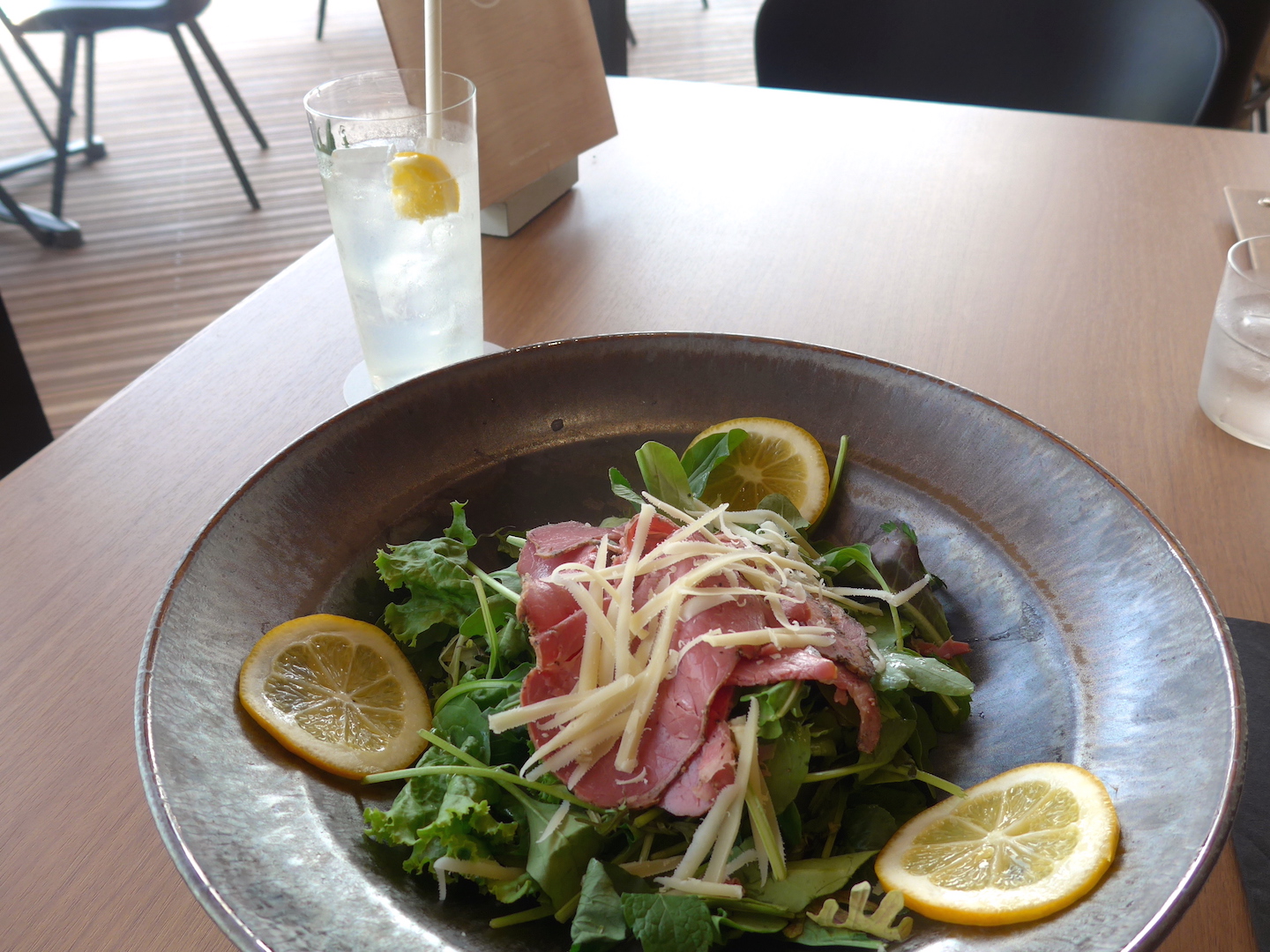
One feature worth noting is the "ProPilot Waiter," which utilizes Nissan's driving assistance technology. It's a robot that automatically delivers ordered food, and while it's simple, it's somehow charming, and I found myself wanting to watch it for a long time.
"Exhibition of new works by Nissan Art Award 2020 finalists"
[Period] August 1st (Saturday) - September 22nd (Tuesday/Holiday), 2020
[Hours] Mon-Fri 11:00-19:00 / Sat & Sun 10:00-19:00
[Closed] Irregular holidays
[Venue] Nissan Pavilion
[Fee] Free
